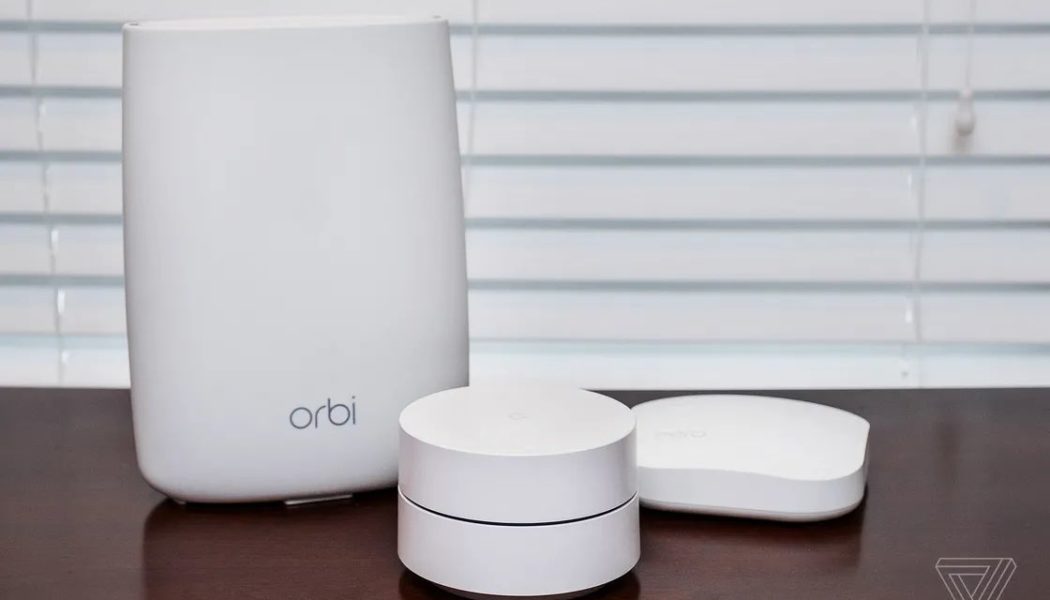Eero’s original mesh Wi-Fi router is going to the tech junkyard in the sky. This week, the company delivered an End of Life notice to users in its app, warning that the OG router’s days are numbered.
The first-gen Eero, which debuted in 2016 and was discontinued in 2017, will stop receiving guaranteed software security updates after September 30th, 2022, Amazon spokesperson Connor Rice confirmed to The Verge. This is just over six years after the product launched. The devices won’t stop working, but they won’t receive new features — or, most crucially, security updates — beyond this date.
This gives rise to the question of just how long you should keep your Wi-Fi router around. An essential piece of infrastructure in modern homes, it’s easy to forget about it as it chugs along, streaming your Netflix queue, playing your Spotify playlists, and quite possibly keeping your lights on if you live in a smart home.
With new technologies popping up all the time (yes, there’s already talk of Wi-Fi 7), is a six-year-old mesh Wi-Fi router obsolete? Eero promises to support its routers for at least five years after it stops selling them (the first-gen just squeaked in there, but the second-gen model is promised support through at least 2027). Google will end support for its OnHub routers later this year and has said it will continue to support its Google Nest Wi-Fi routers for at least five years after launch. Other companies’ policies vary. Netgear, for example, promises three years of support after a product has stopped being sold.
:no_upscale()/cdn.vox-cdn.com/uploads/chorus_asset/file/24001788/dseifert_161205_1307_0002.0.jpg)
While a cursory Google search will tell you to replace your router every three to five years, there actually isn’t a hard and fast rule. Netgear’s Sandeep Harpalani tells me that most routers shouldn’t see significant performance degradation over time unless there’s a hardware failure of some kind.
If you are experiencing problems but your router’s hardware is still ticking along just fine, Harpalani says it’s probably because your Wi-Fi environment has changed. “If you’re seeing issues, it’s most likely because you’re buying all these new devices that would benefit from some of the newer Wi-Fi technologies.” These include routers that are capable of handling faster speeds and providing more robust Wi-Fi performance with new features such as Wi-Fi 6 and Wi-Fi 6E.
Wi-Fi 6E is the newest tech in Wi-Fi routers and brings with it the new 6GHz Wi-Fi band — in addition to 2.4 and 5 GHz bands. This is a wider, cleaner band that can handle multi-gigabit speeds, but only devices that support 6E can use it. Harpalani advises upgrading your router at the same time you’re upgrading to devices that can take advantage of this. But there aren’t many devices with these capabilities on the market yet — only some newer smartphones and laptops like the Google Pixel 6 and some gaming laptops (no Apple devices).
If you don’t need Wi-Fi 6E, the next reason to upgrade would be to move to Wi-Fi 6. If you’re still rocking a Wi-Fi 5 or Wi-Fi 4 router, upgrading to a Wi-Fi 6 router should improve the speed of your network overall. While it doesn’t have its own band like Wi-Fi 6E, Wi-Fi 6 helps your router handle multiple devices better.
Those devices do have to be Wi-Fi 6-capable, but there are many more compatible products compared to 6E, including the last couple generations of iPhones and most laptops and Android phones from the last couple of years.
All this considered, here are the main reasons why you might want to upgrade your router:
Your Wi-Fi router has been EOL’d and isn’t getting security updates
If the manufacturer no longer supports your router — as with Eero’s first-gen model — you should get a new one. While these routers will still continue to work, you’re putting your network’s security at risk because they will no longer receive security updates. This could lead to nasty situations, such as when malware in routers injected ads and pornography into websites or when 200,000 routers were hijacked and put to work as crypto miners.
Most companies list the routers they have ended support for on their websites. Here are the pages for Asus, D-Link, Netgear, and TP-Link. Only the first-gen Eero has reached its EOL, but you can see a list of the guaranteed security software update periods for its routers here.
The reasons a company might decide a router has reached its “end of life” vary. Harpalani says it’s generally around hardware and software performance constraints or significant technological changes. “For example, we’re currently looking at end of life-ing our Wi-Fi 4 routers because Wi-Fi 6 and 6E are here,” he says.
Your Wi-Fi router can’t keep up
If you’re getting significantly slower Wi-Fi speeds than you used to, if the range of your Wi-Fi seems to have dropped off, or if you’re finding devices are having trouble staying connected to Wi-Fi, then it might be time for an upgrade. Rebooting your router can sometimes fix these issues, but if you find you have to reboot often, that’s another good sign it’s time to upgrade.
You have newer / more devices that would benefit from a better router
If you’ve substantially increased the number of devices in your home over the last couple of years (with so many people now working from home, that’s pretty likely), then it’s possible your old router is sweating under the strain.
Consider upgrading to a Wi-Fi 6 or Wi-Fi 6E router (based on your devices) and / or looking at a mesh router that helps spread connectivity further around your home.
You’re paying your ISP for more speed than your router can handle
If you signed up for gigabit speeds but are still rocking a router that is only capable of 500 Mbps or lower, you’re wasting your money. Upgrade to a newer router that can handle the speeds you’re paying for.
The good news is there are a lot of choices when it comes to buying a new router and a wide range of price points. It’s always worth considering the latest tech if you can afford it, which would be Wi-Fi 6E. Eero’s latest Wi-Fi 6E model is a good option if you have capable devices. Netgear’s top-of-the-line Orbi system is also Wi-Fi 6E capable, and TP-Link has a more affordable 6E model.
Eero also offers the gigabit-capable Eero 6 Plus if you’re upgrading your Wi-Fi speeds and don’t want to pay the current price premium for 6E. There are also plenty of non-mesh options from TP-Link, Netgear, D-Link, and others. (Note: If you are upgrading from an original Eero, you can get 25 percent off a new Eero through the Amazon Router Trade-In program.)
Correction, Wednesday, September 7, 12:14PM: An earlier version of this article had a typo that indicated 500 Gbps was less than gigabit speeds. It should have read 500 Mbps. We regret the error.









